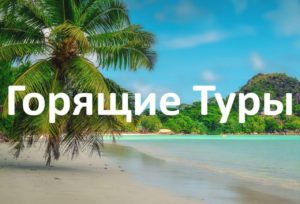Sri Lanka Welcomes once you cross the threshold of the International airport Bandaranaike, which is 30 km North of Colombo is the largest city on the island.
Most of all from the airport go to the South-West coast, passing the capital of Sri Lanka on the Expressway, plunging into countless resort towns: Beruwela, Bentota, Hikkaduwa, Unawatuna, Weligama, etc., However, will still advise you to rest after a long flight and stay for another day near the airport in the coastal town of Negombo for breath on the shore of the ocean and start to take in the local flavor. Or turn to the Eastern metropolis of Colombo, which is full of interesting attractions, and where you can spend the acclimatization – from city tours on the 2-storey bus to visit gastronomic establishments and shopping (the famous Central market of Pettach is a must to visit to feel the full Oriental Bazaar).
To the North of Colombo along the West coast there are resorts for a quiet and relaxing holiday – Waikkal, Maravila, Chilaw, up to Puttalam, located on the shore of the lagoon, skirting which on the spit you get to Kalpitiya – a Paradise for kitesurfers. Close to Puttalam huge national Park life sanctuary, home to leopards, elephants and lazy bears. Interesting to visit will also be the island of Mannar, connecting Sri Lanka with India group of Islands – “Adam’s bridge”.
Every year, an increasing number of travelers visit the city of Jaffna, located in the North of the island and can already be reached by rail. This is another attractive opportunity to get into the territory, which was closed to the public for many years of the civil war with the Tamils.
The southern coast is much more developed than the North. This is the old Dutch city of Halle with the best preserved colonial architecture and the sea fortress Fort, listed as objects under the protection of UNESCO. And the growing resort of Unawatuna, which is gaining popularity with each passing year. Weligama has turned into a real surf resort and ideal for beginners. Well, the beauty of the beaches and organized hotel service in Mirissa and Tangalle has long attracted crowds of beach lovers. In the non-resort town of Matara you can still see the remains of Dutch buildings, and Tissamaharama is a convenient starting point to visit the most popular national Park of Yala and the temples in the city of Kataragama.
To the East of Colombo deep into the island rises evergreen highlands covered with manicured tea plantations (first imported by the British), which still play a vital role in the economy of the island. In the heart of the region is Kandy – the second largest city in Sri Lanka and the cultural capital of the Sinhalese. Kandy is very much loved and revered by the Sri Lankans. Here is the most important temple, which houses the relic-the tooth of the great Buddha, as well as once a year changing the whole city, turning into the most colorful and massive festival of Sri Lanka-Esal Perahera, accompanied by a festive procession of dressed elephants, dancers, musicians, jugglers and fakirs.
To the South near the highest point of the island is the city of Nuwara Eliya, built by the British in their English style. Due to the stunning views of the tea plantations on the mountain hills, Nuwara Eliya is also called the tea capital-the center of the country’s tea industry and a convenient base for visiting the impressive Horton plains National Park. A number of towns and villages (Ella, Haputale and Bandarawela) along the southern margin of the hill country offer an appealing mixture of magnificent views, wonderful walks and British colonial charm. Near the South-Western edge of the hilly country rises to the top of the mountain Adam’s Peak – one of the main places of pilgrimage on the island; and the center of production of gems Ratnapura to the South serves as the best starting point for visiting the rich elephants Udawalawe National Park, and rare tropical forest, Singaraja.
North of Kandy, a country of hills flows into the arid plains of the Northern dry zone. This area, known as the cultural triangle, was the site of Sri Lanka’s first great civilization, and its extraordinary spread of ruined palaces, temples and pagodas still gives a compelling sense of this glorious past. First of all, these are the breathtaking ruined cities of Anuradhapura and Polonnaruwa, wonderful cave temples of Dambulla, shrines on the top of the hill and the Mihintale pagoda and the extraordinary rock Citadel of Sigiriya.
The two main gates to the East are the cities of Trincomalee and Batticaloa, each boasting a masonry of colonial remains backed by bays and lagoons. In other places, a huge strip of coastline in the East remains largely undeveloped. Group a completely new resort hotels dot the waterfront in Passekudah, North of Batticaloa, although most visitors prefer the more quiet charms of a sleepy beach of Nilaveli and Uppuveli, North of Trincomalee, or the surfing centre of Arugam Bay, in the southern part of the coast.
In General, wherever you decide to go – it will be an unforgettable experience and amazing adventure. Good luck!
Check the current prices of flights to Sri Lanka
[tp_search_shortcodes]
One of parameters (id, slug) is required
Can’t find search form model by id “598e3014”












